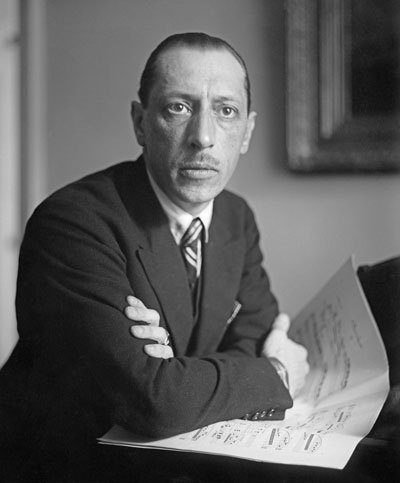Igor Stravinsky

Born: June 17, 1882, Saint Petersburg, Russia
Died: April 6, 1971, New York, New York
Octet
- Composed: 1923, revised 1952
- Premiere: October 18, 1923 in Paris, conducted by the composer
- Duration: approx. 14 minutes
“The Octet began with a dream,” Stravinsky recalled in his Dialogues and a Diary, “in which I saw myself in a small room surrounded by a small group of instrumentalists playing some very attractive music. I did not recognize the music, though I strained to hear it, and I could not recall any features of it the next day, but I do remember my curiosity—in the dream—to know how many the musicians were. I remember too that after I had counted them to the number eight, I looked again and saw that they were playing bassoons, trombones, trumpets, a flute and a clarinet. I awoke from this little concert in a state of great delight and anticipation, and the next morning began to compose the Octet.” Coming from an arch-Romantic like Schumann or Berlioz such a colorful confession about the genesis of a work might have been expected, but coming from Stravinsky it was extraordinary. Stravinsky was, after all, the most outspoken of the 20th century’s composers in proclaiming the separation of music and emotion—the philosophy that music is merely an abstract patterning of sounds arranged to satisfy the composer’s intellect, and that it “means nothing” in the programmatic or expressive sense—and, in 1924, a year after the Octet was completed, he issued a sort of apologia for his dream-confession in which he stated, “My Octet is not an ‘emotive’ work but a musical composition based on objective elements that are sufficient in themselves.” It is precisely such a clear-eyed, anti-Romantic (and anti-Debussy) belief that served as the philosophical basis of Stravinsky’s music for the 30 years after the 1923 Octet—the period of his creative career known as “Neoclassicism,” when the emotional detachment and pristine clarity of 18th-century formal models and the intricate motivic and contrapuntal workings of Johann Sebastian Bach’s music (realized, of course, through modern practices of harmony and sonority) were the ideals fueling his creativity. Stravinsky’s Octet was among the first important compositions of the Neoclassical movement that profoundly influenced the music of the mid-20th century.
The three movements of the Octet are built on Classical models, though the influences of the French instrumental divertissement, Johann Sebastian Bach and even Venetian music of the Renaissance have also been cited. Stravinsky admitted the inspiration for the opening Sinfonia came from the symphonies of Haydn, though the slow introduction is more mischievous than ceremonial in character and the compact sonata form reverses the themes in the recapitulation. Stravinsky began the second movement as a waltz, and only after he had written the theme did he discover that it would make a fine subject for a set of variations. He composed the “ribbons of scales” (his phrase) variation first, and then used it as an interlude between most of the sections, giving the following form to the movement: Variation A (“ribbons of scales”)–Variation B (a Prussian march)–A–C (a slightly tipsy waltz)–D (a vertiginous galop)–A–E (a lugubrious fugato that Stravinsky said was his favorite episode in the Octet). “The finale,” according to the composer, “grew out of the fugato [‘little fugue’] and was intended as a contrast to that high point of harmonic tension.” The movement is jaunty in spirit and terse in speech, and it confirms Stravinsky as one of the 20th century’s foremost masters of counterpoint.
—Dr. Richard E. Rodda